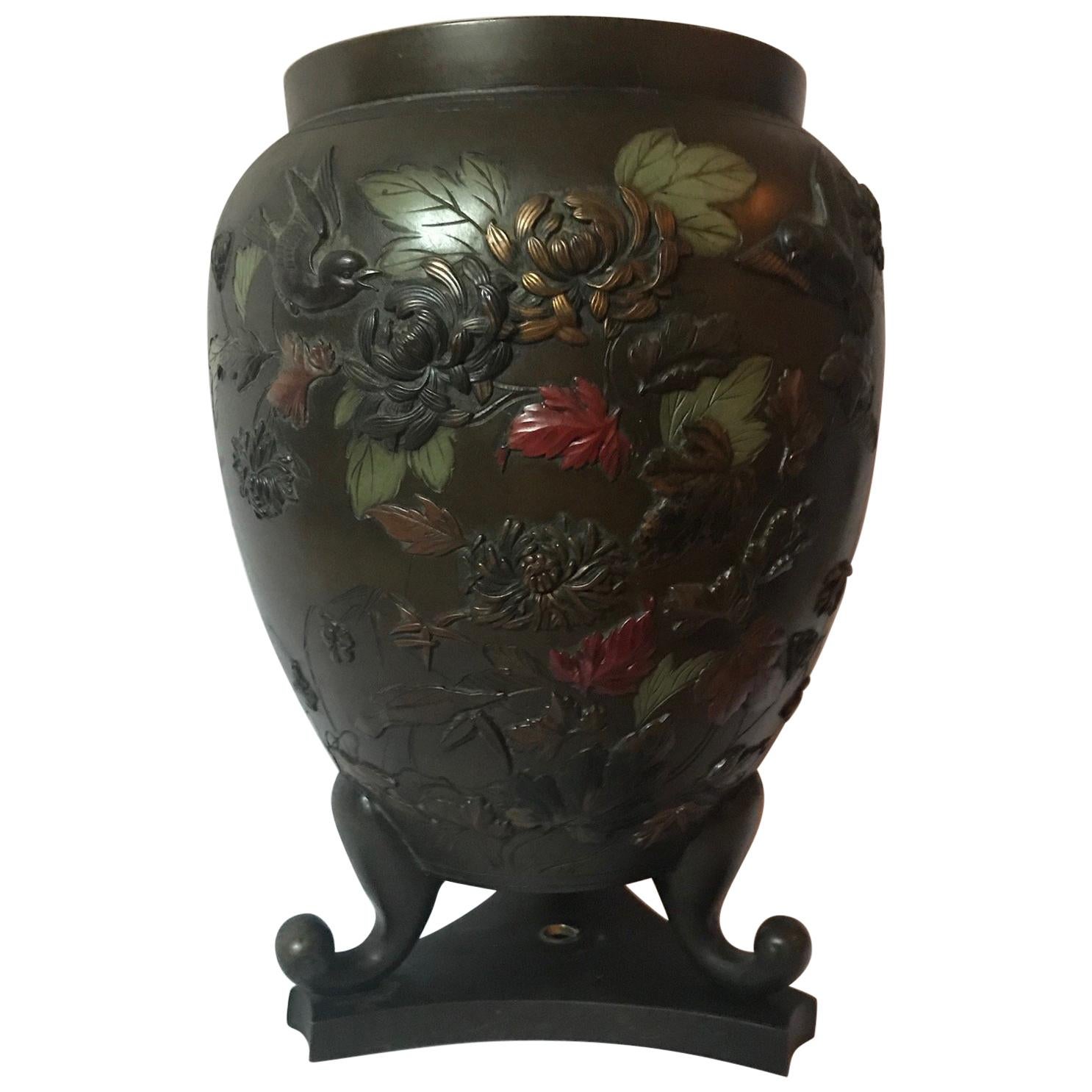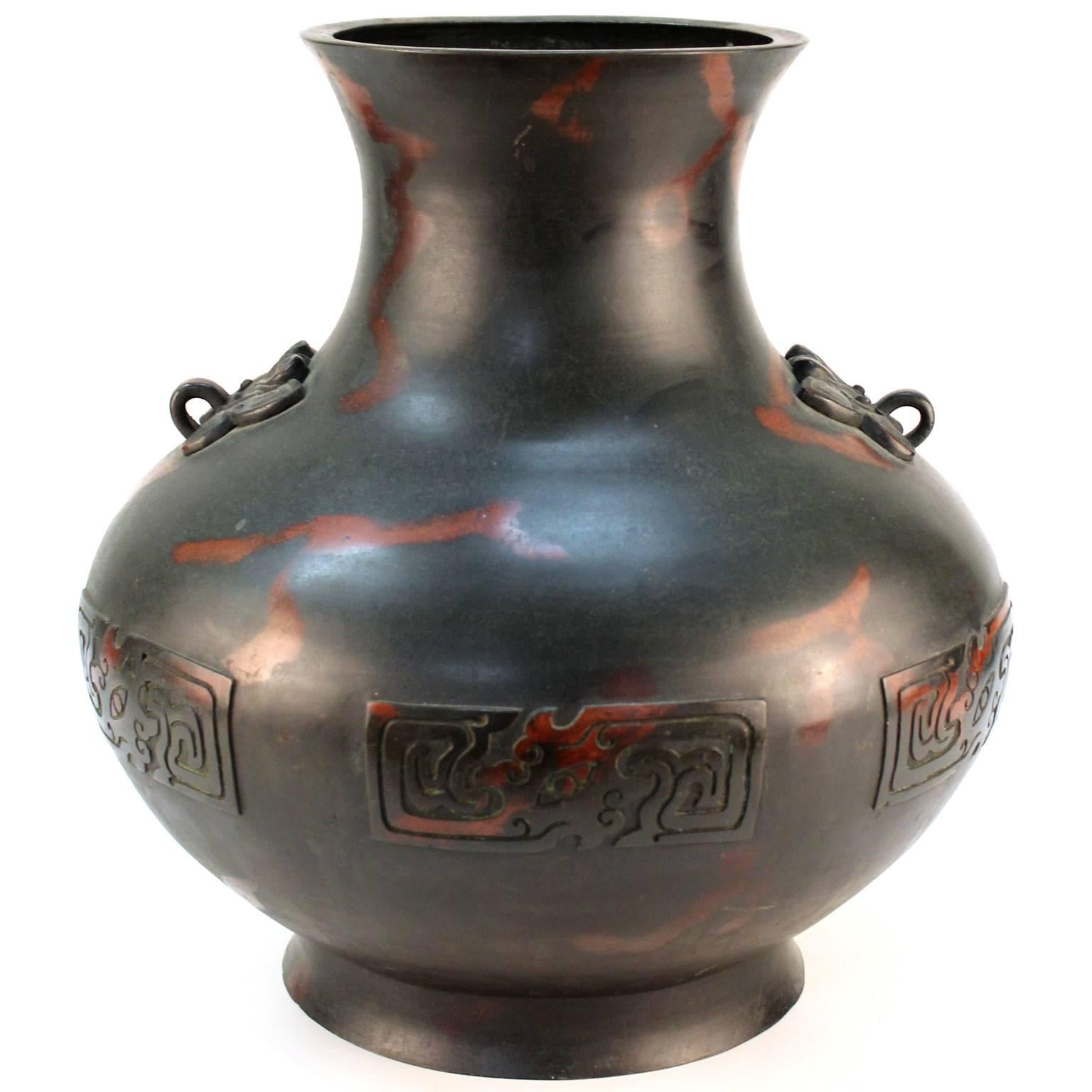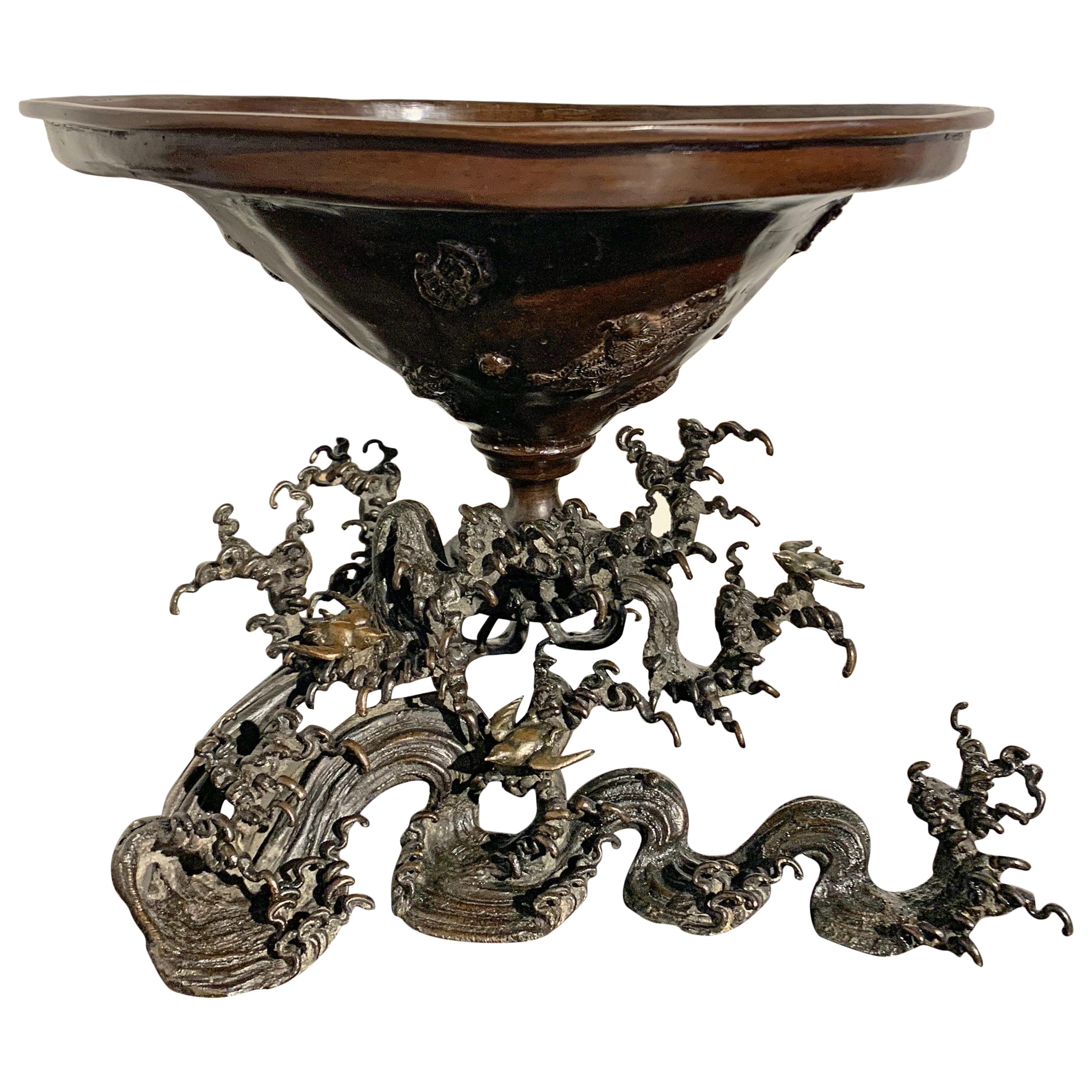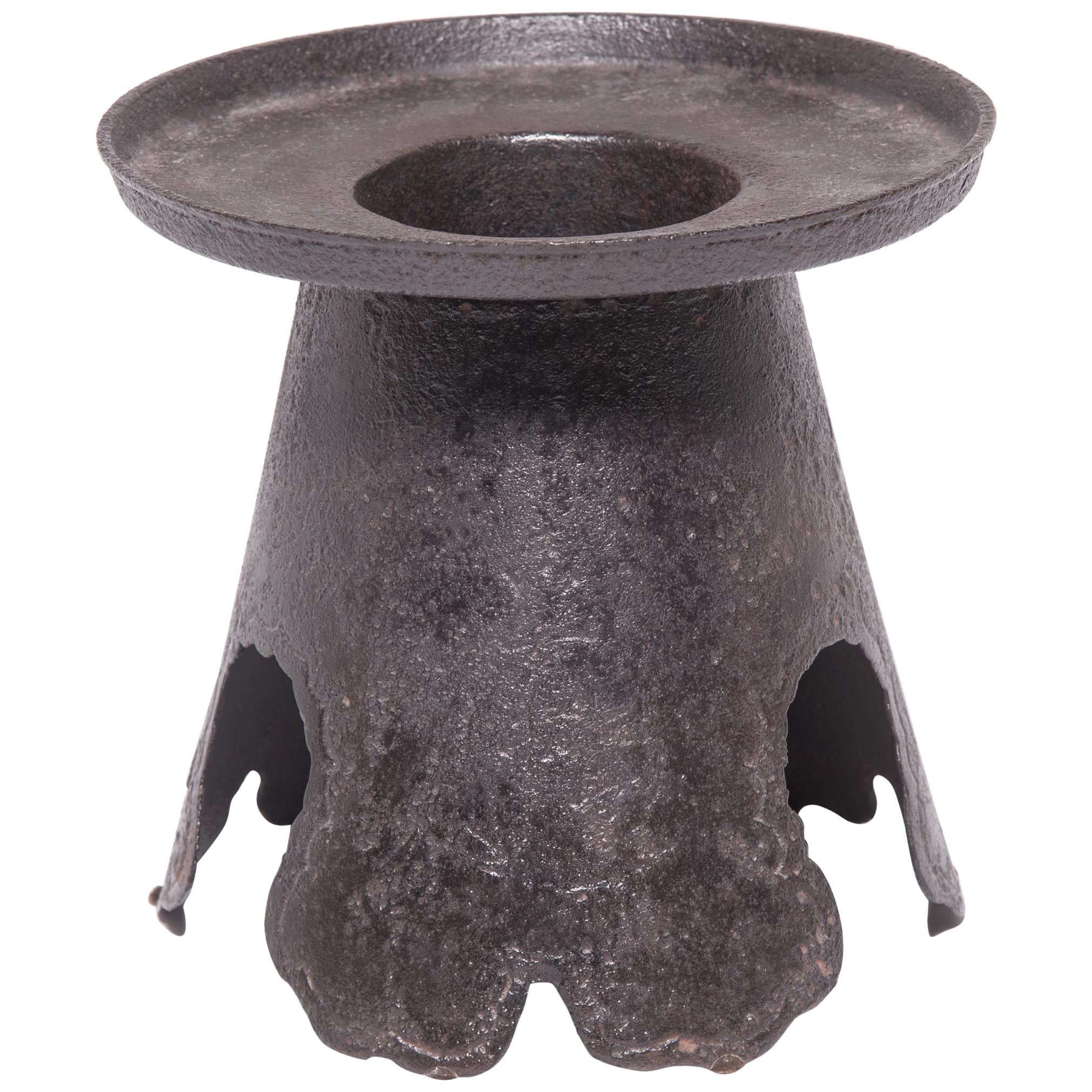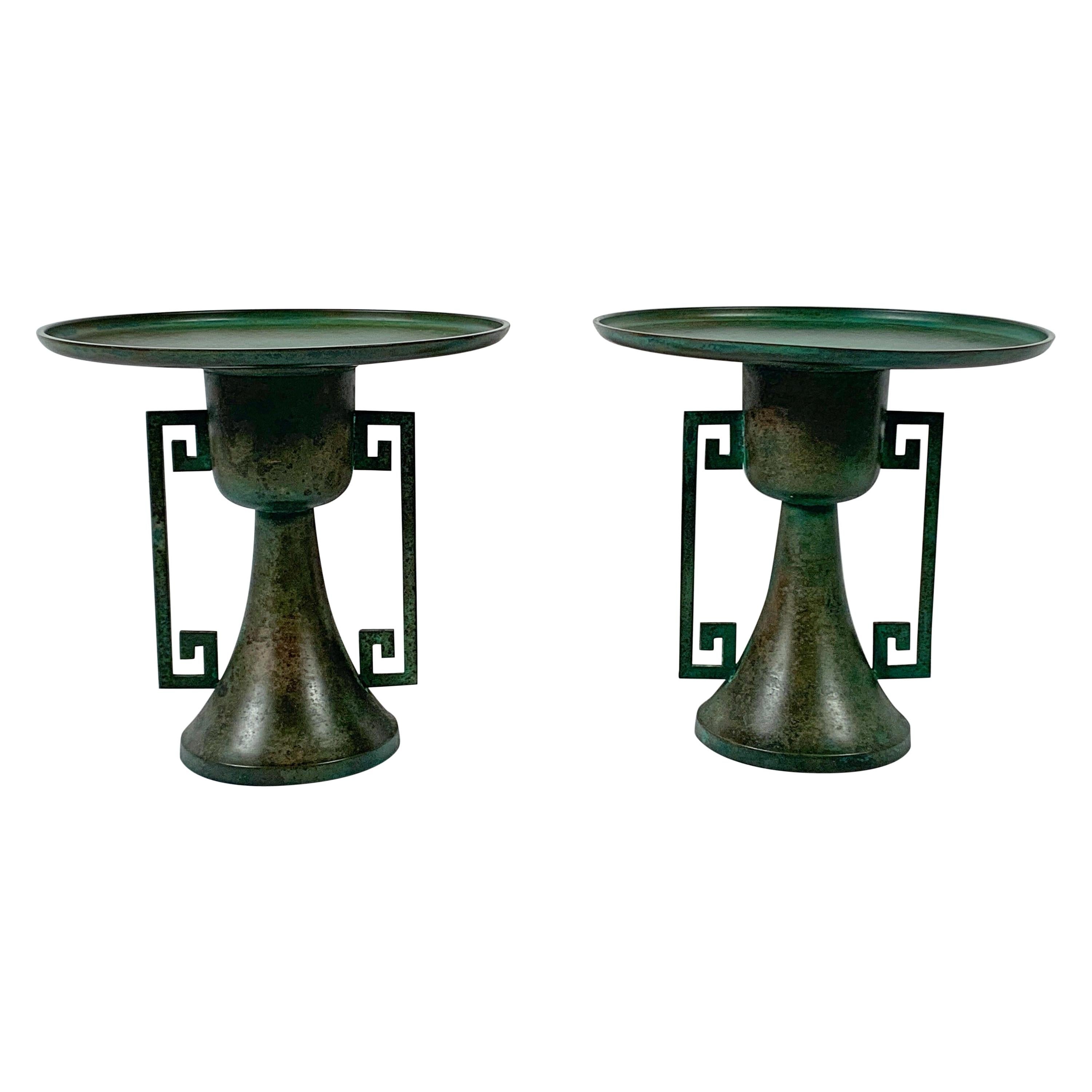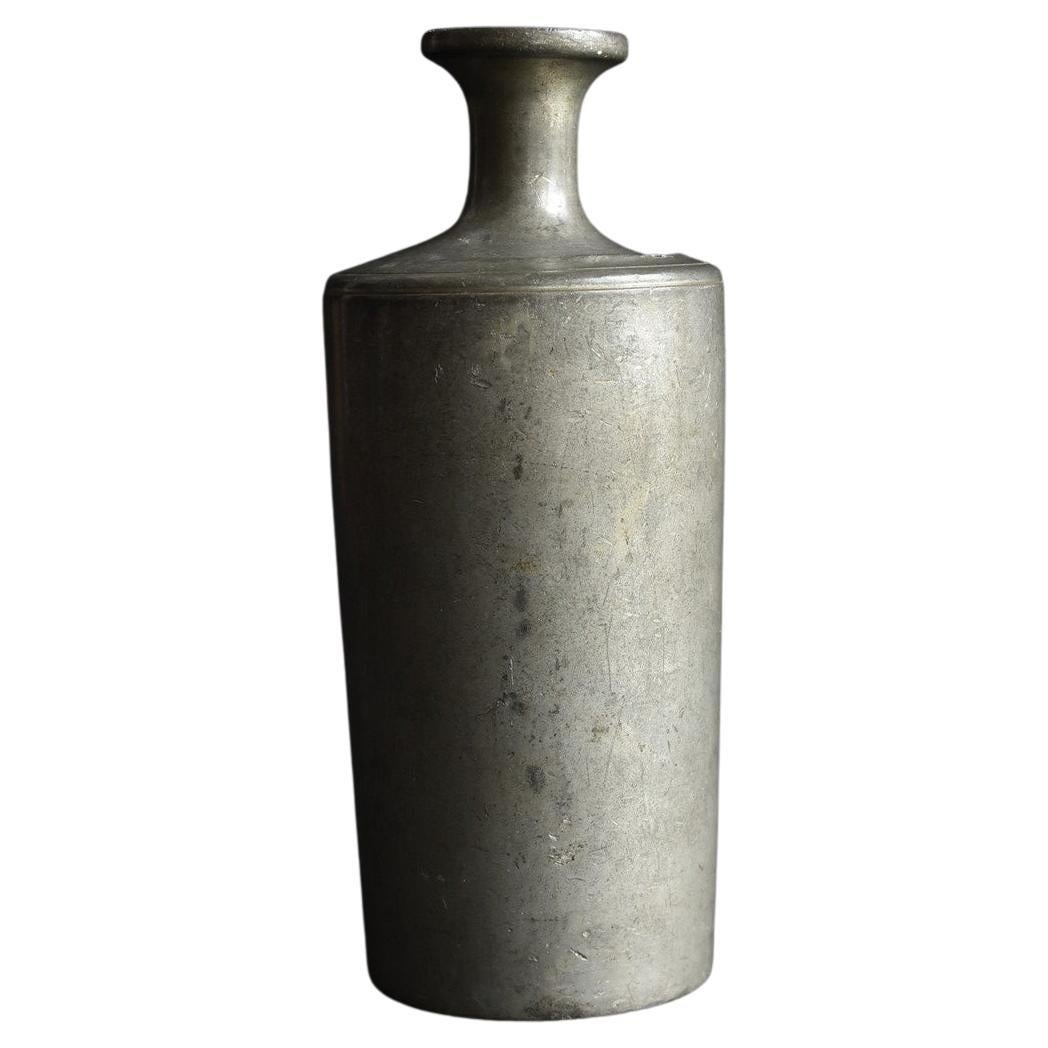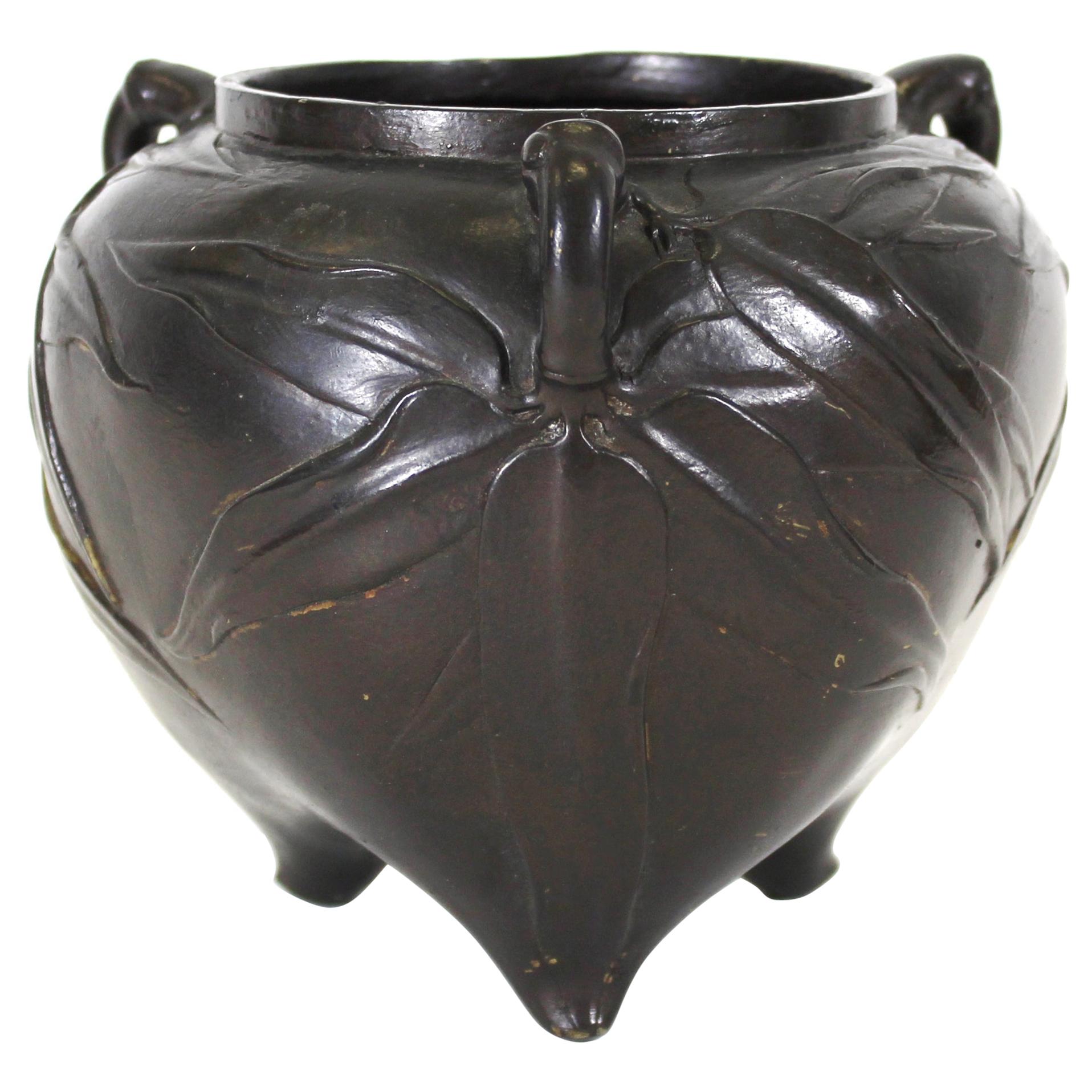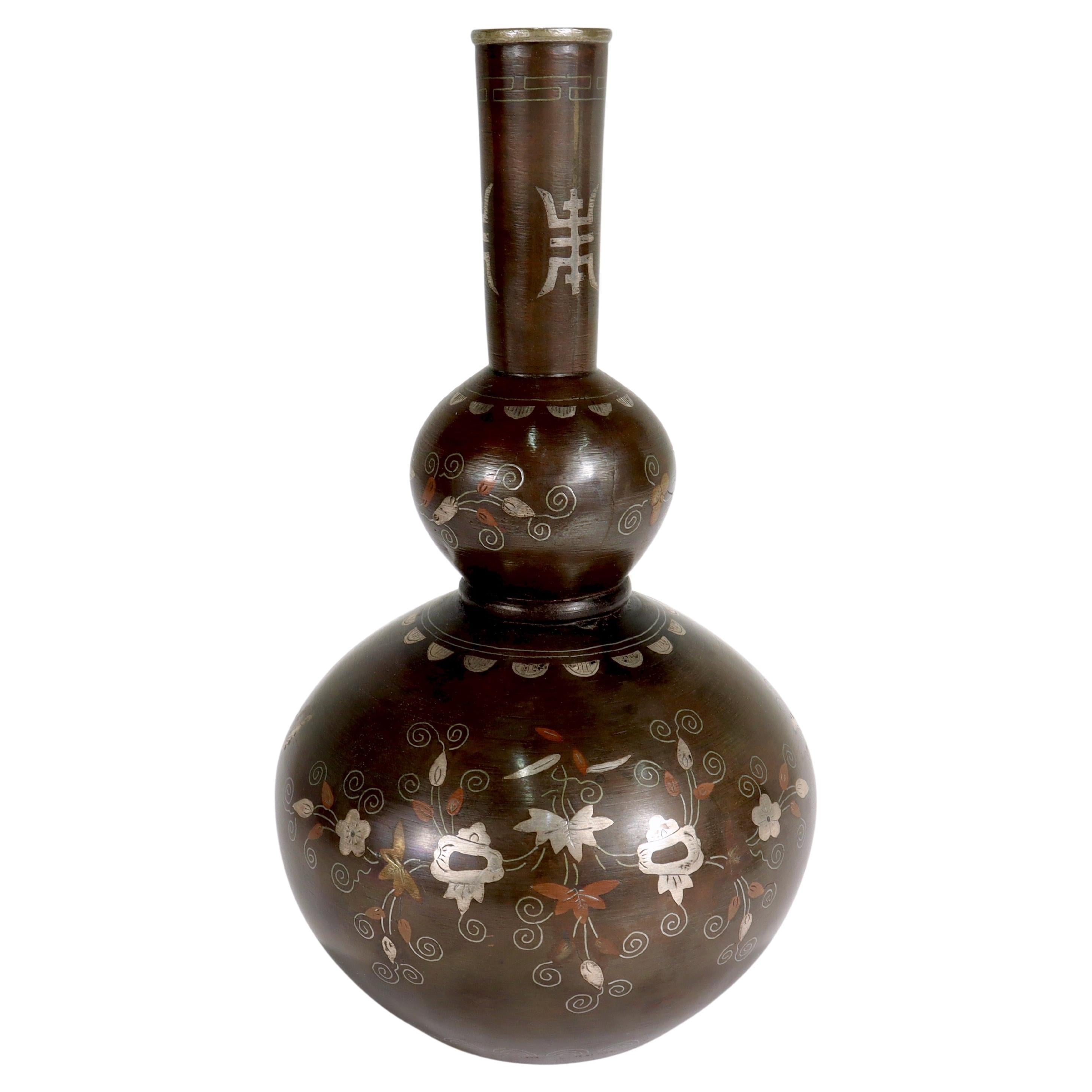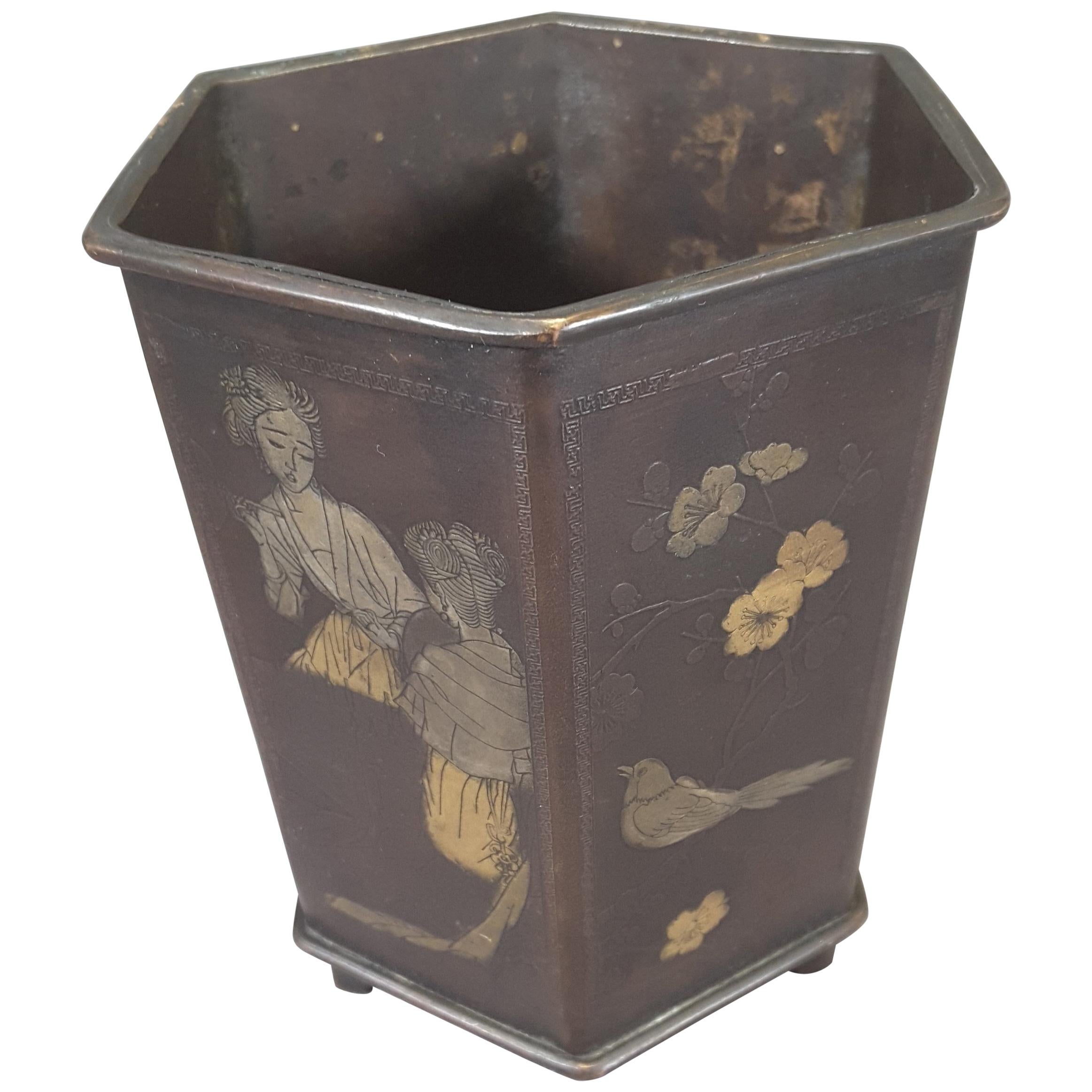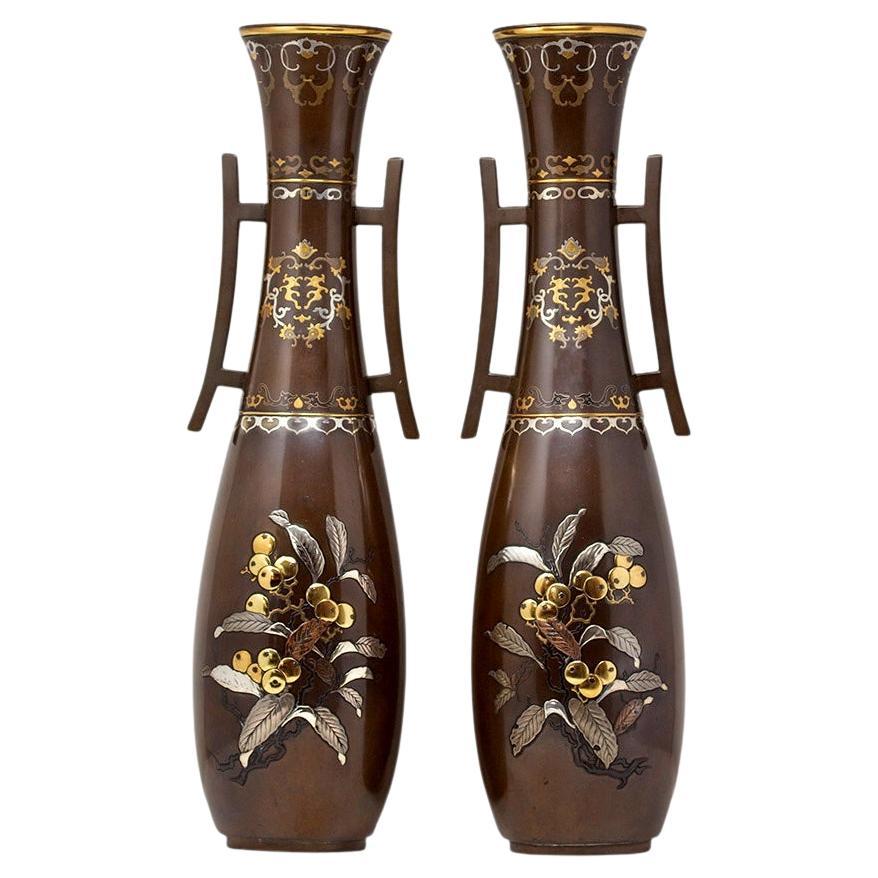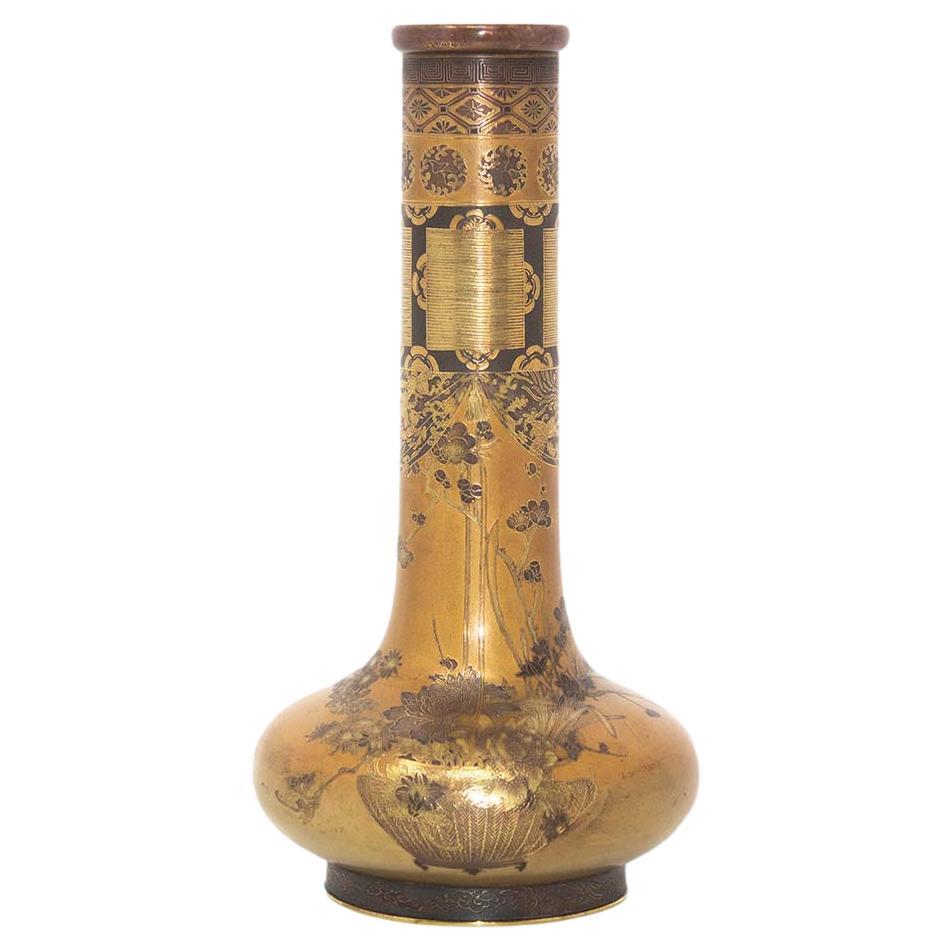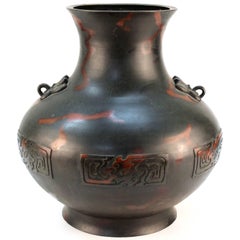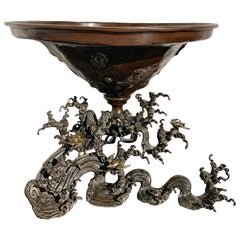
Taisho '1912-1926' Bronze Wave Usubata
View Similar Items
1 of 6
Taisho '1912-1926' Bronze Wave Usubata
About the Item
- Dimensions:Height: 6.13 in (15.58 cm)Width: 9.25 in (23.5 cm)Depth: 9.25 in (23.5 cm)
- Style:Meiji (Of the Period)
- Materials and Techniques:Bronze,Cast
- Place of Origin:
- Period:
- Date of Manufacture:1868-1912
- Condition:Wear consistent with age and use. This bronze usabata has been cleaned only.
- Seller Location:Stockbridge, MA
- Reference Number:1stDibs: LU5414220464382
You May Also Like
- Taisho Period (1912-1926) Red and Black Patinated Bronze VesselLocated in New York, NYA monumental Japanese Taisho period (1912-1926) red and black patinated vessel in heavy bronze casting. The piece is in good vintage condition with one minor dent on the lower side. ...Category
Early 20th Century Japanese Taisho Metalwork
MaterialsBronze
$3,600 Sale Price20% Off - Early 20th Century Taisho Period '1912-1926' Japanese Three Footed Bronze VaseLocated in Vero Beach, FLThis beautiful baluster shaped bronze vase has a rich dark patina. The entire body is adorned with abundant foliage, blossoms and swallows in relief casting. Every flower is highligh...Category
Early 20th Century Japanese Taisho Metalwork
MaterialsBronze
- Japanese Bronze Usubata with Waves and Plovers, Edo Period, Mid-19th CenturyLocated in Austin, TXAn impressive Japanese cast bronze usubata, vessel for ikebana, in the form of a large conical vessel being supported by crashing waves and flying chidori. Edo Period, mid-19th centu...Category
Antique Mid-19th Century Japanese Edo Metalwork
MaterialsBronze
- Japanese Usubata Ikebana Vessel, c. 1900Located in Chicago, ILThis early 20th century iron vessel is a Meiji-era vase designed especially for ikebana, the Japanese art of floral arrangement. The two-piece vase was cast in the classical usubata ...Category
Early 20th Century Japanese Meiji Vases
MaterialsIron
- Antique Japanese Mixed Metals Copper & Silver Usubata Ikebana Flower VaseLocated in Philadelphia, PAA fine antique Japanese flower vase. In hand-hammered copper (or possibly a thin-bodied bronze) with applied silver bands to rim, footrim, shaped edge, and with a lotus petal border at the joint of neck and body. Having the usubata form with a wide flared neck and mouth. The 'usubata' vase is a form favored for large scale floral arrangements by the Ikenobo school, the oldest and largest school of Japanese ikebana founded in the 15th century by Buddhist monk Senno Ikenobo. It is believed that the wide and shallow rim of an usubata vase which displays the surface of the water best imitates natural conditions of growth while also contributing to the longevity of an arrangement with the increased surface area of the water better oxygenating the plants. The base retains still retains hand-hammered marks. There is evidence of seams and folds throughout from the construction, and the surface has a cloud-like brown patina throughout. Simply a wonderful Japanese mixed metal vase...Category
Antique Late 19th Century Japanese Meiji Vases
MaterialsCopper, Silver
- Pair of Vintage Japanese Bronze Usubata, Showa, Mid-20th Century, JapanLocated in Austin, TXA striking and stylish pair of vintage Japanese cast and patinated bronze usubata, vessels for ikebana flower arranging, early to mid-20th century, Japa...Category
Mid-20th Century Japanese Showa Metalwork
MaterialsBronze
Recently Viewed
View AllMore Ways To Browse
Bronze Usubata
Antique Ikebana
Antique Japanese Ikebana
Japanese Bronze Cast Vases
Japanese Cast Bronze Vases
Meiji Bronze Ikebana
Japanese Usubata
70s Aluminium Vase
Niloak Mission Swirl Pottery
Lenore Asbury
Red And Green Blown Glass Vase
Jewellery Moulds
Baccarat Painted
Bordeaux Ceramic
Black And Gold Jars
Italy Vase Midcentury Orange Ceramic
Pottery By Otto
Display Vase
